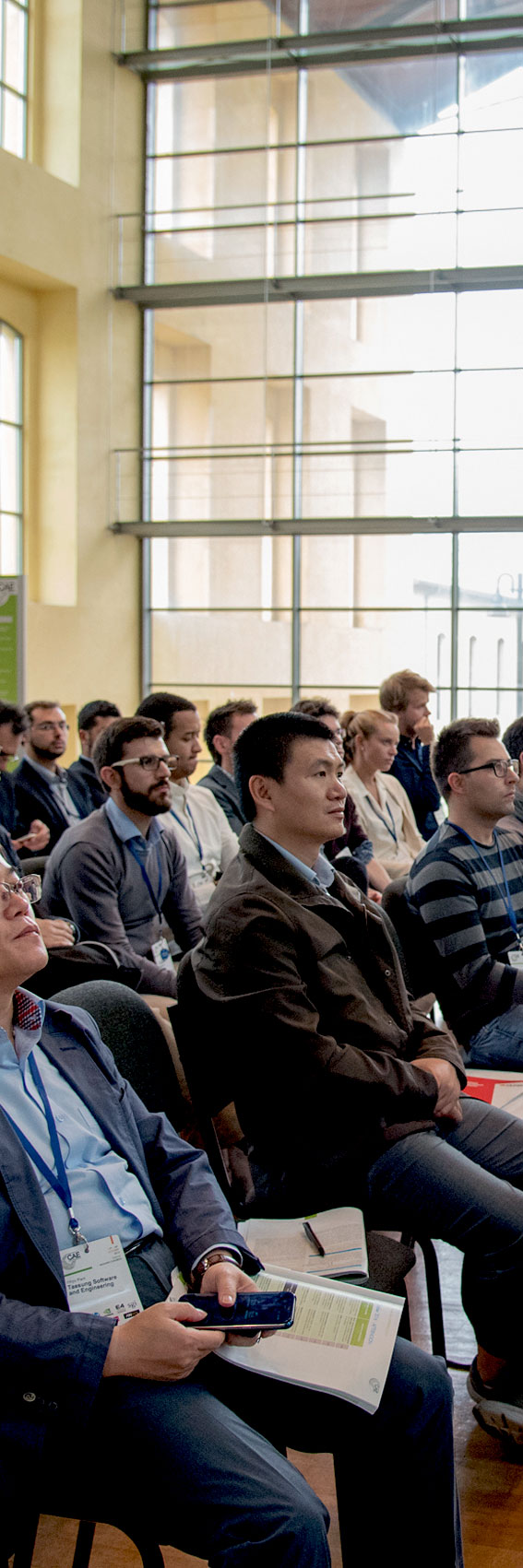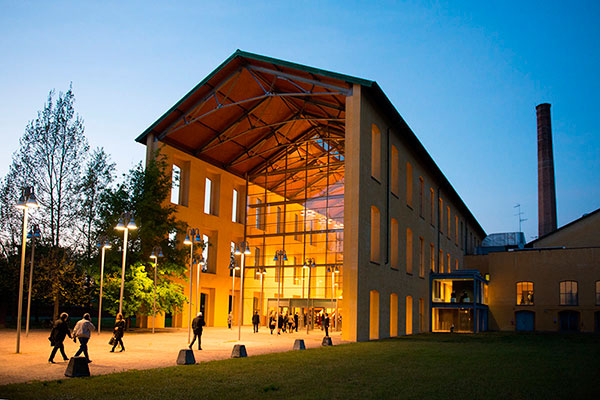
The simulations that improve life
Simulations that save lives
Parma, 18th October 2016
The 32nd edition of the International CAE Conference has just closed at Paganini Congressi in Parma, proving once more its extraordinary focus on the culture of technology and numerical simulation. Many representatives from worldwide have been the protagonists of this event, which has brought together worldwide company leaders, academic researchers and scholars of the most advanced public and private labs and the major experts in the world of simulation and virtual experimentation.
Stefano Odorizzi, scientific director of the international conference, researcher and lecturer at the University of Padova, CEO and co-founder of EnginSoft, stated: "Thirty years ago who applied the simulation to product and process development belonged to a small community. Today, thirty years later, this event is the mirror of how CAE technologies have become necessary and widely extended to all sectors of life, becoming the essential engine for the development and innovation of products, processes and services in every field: from aircraft to constructions, from transportation to energy, up to medicine. Today it is fundamental and inseparable of industry 4.0".
Odorizzi’ s words have been confirmed by the numbers of the event: more than a thousand congress delegates coming from all over the world, with a 15% increase in participants in comparison with previous editions, over 150 speakers in the thematic sessions and more than 50 booths in the exhibition area of projects and studies on the latest news and results of forefront research obtained thanks to the simulation.
The two plenary assemblies could count on well-known experts as Akin Keskin, engineer of Rolls-Royce and Giovanni Andrea Prodi of the University of Trento. The research group of Professor Prodi, working in the Italian Virgo Project, has been the first in the world able to record the gravitational waves hypothesized by Einstein and to prove their existence. "A true revolution - the professor said - that has given humanity a new sense of perception of the universe".
Of great importance, the participation of Professor Alberto Broggi, pioneer in studies of autonomous vehicles, founder of VisLab, spin-off of the University of Parma, ceded in 2015 to the Americans for 30 million dollars. The creation of a fully Italian autonomous car began well before Google: "We started not just before - Broggi stated - but much much earlier. In the nineties, when I built the first prototype in Turin, Google did not even exist". And he assured that "it won’t take long before seeing these cars on our roads and highways".
To predict and improve the world in the next century and beyond: This is the commitment of CAE (Computer-aided engineering) and numerical simulation. And this is also true for those technologies capable of predicting natural disasters or designing adequate countermeasures, so to save human and animals lives.
In this perspective, a whole session of lectures with a final debate has been dedicated to seismic topics. A relevant issue, not just after the recent sad events happened in central Italy, but also considering the earthquakes that damaged and shocked the Emilia Romagna region few years ago.
The recent earthquakes have highlighted in many cases the seismic vulnerability of existing buildings in Italy. Despite years of research and new regulations, there are still many aspects which need to be further investigated to achieve a rational planning and optimized intervention strategies on constructed areas both on a national and local level. Computer simulation is the protagonist once again (surveys, numeric forecast of the structural behavior, etc.) in order to obtain a deeper insight on the different phases leading to a complete evaluation of the seismic vulnerability of buildings and the corrective measures to be undertaken for both structural and not structural parts. The demonstrations have been entrusted to the main teachers of the departments of civil, environmental and industrial engineering of Italian Polytechnics and Universities, as well as to the experts of the National Institute of Geophysics and Volcanology and of European research centers - ISPE.
Such presentations have been enriched by one of the five winning projects prized at the Poster Award competition, which has been reserved for students, doctoral students, researchers and/or teachers of universities and research centers to show the best ideas and applications of simulation. Its authors have elaborated a numerical model that, by exploiting the principles of tomography also used in medicine, is able to produce three-dimensional models of buildings, highlighting their vulnerability and their critical points and allowing targeted anti-seismic consolidation. This valuable invention has already been tested on the Fortress of San Felice sul Panaro and in the future, it could be applied to all historical and monumental buildings of our heritage.
Among the guests it’s worth mentioning also Alessandro Catanzano of Cimolai, Italian industry, located in Pordenone, that has been the protagonist of the fabrication of the greatest work of civil engineering of this century: the doubling of the Panama Channel, inaugurated last June. Cimolai has, in fact, worked with Salini Impregilo and made the 16 large sliding gates, manufactured in steel and water proof welded, 33 meters high, 10 meters wide and 58 meters long with over 4 thousand tons of weight. They are necessary to control the water flow to the lifting basins for big ships during transit. It has been designed to withstand 100 years of continuous use and earthquakes up to 7.4 on the Richter scale without suffering any damage. It takes 3-4 minutes to open/close the respective gates. To overcome a difference in height of about 27 meters between the oceans and the Gatun lake, vessels will enter into an ideal hydraulic lift made of three rooms, that constitute the single gates, and are adjusted by the sliding gates system. Countless virtual simulations have been performed, fundamental for a work that will ensure safe operability of the channel for over a century.

